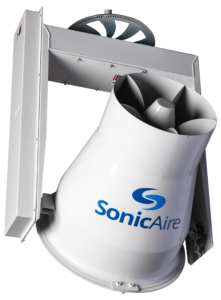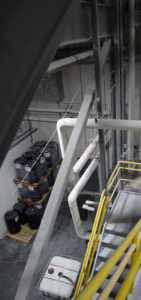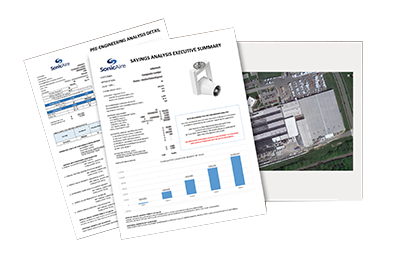The Labor Shortage
There is a labor shortage in the United States, and it’s impacting more than production.
Reports from across the country indicate a lack of qualified applicants to fill open positions in restaurants, construction, and manufacturing organizations. While the causes may vary from unemployment benefits to at-home child care, the reality is that many production and processing facilities are struggling to find the help they need.
Despite this, many industries appear to be slowly moving forward by increasing production to prepare for demand. But without sufficient staff, companies can’t keep lines open or re-open shifts. This bottleneck could ultimately limit recovery.
The labor shortage has ramifications that extend beyond production, though. In most manufacturing and processing facilities in the U.S., housekeeping is handled by staff. If facilities don’t have enough workers to maintain production, who will keep the company compliant with OSHA and NFPA regulations?
According to one facility manager we’ve spoken to, it’s a significant concern. “We know this has to get done,” he said, referring to removing combustible dust buildup, “but we don’t have enough people to keep up.” Depending upon the processes and products involved, housekeeping could be as infrequent as once a year or every month. Plants with regular cleanings will be under a lot of pressure to maintain production and mitigate dust buildup.

Short-Term Problem or Long-Term Trend?

While millions of Americans affected by pandemic job loss are still looking for work, the number of skilled trade jobs in the U.S. is far outpacing the supply of qualified workers to fill them. A new analysis by the skilled trades division of staffing leader, PeopleReady, finds that the most in-demand skilled trade jobs are remaining unfilled the longest—roughly a month on average—due to the shortage of qualified workers.
There are underlying concerns surrounding the long-term labor market for hourly workers. While this could be a product of the pandemic and recent legislation, what would a continued reduction in hourly workers do to production in the U.S.? As the cost of living in the United States increases and students graduate with degrees in liberal arts and business, there’s the potential for a much smaller group of people who are interested in working in industrial facilities and construction.
These issues will require years of work and intelligent minds to solve, but we understand their impact as manufacturers. Automation and robotics may answer part of the equation, but not quickly enough to meet demand. And ultimately, we will always need qualified, capable employees to keep facilities productive.
The obvious need is to eliminate, automate, or outsource any work essential to driving revenue. The prominent area of focus here for us is housekeeping.
Minimizing the Impact of Housekeeping
In addition to the cost of goods made, labor is one of the most significant expenses in most companies. When employees spend time on tasks that don’t directly contribute to revenue, it’s a drag on the bottom line.

The question then becomes, how do we reduce or eliminate the need for housekeeping operations?
To reduce combustible dust buildup, facility managers will have some difficult choices to make. Here are a few options they may consider.
1. Change Production Processes to Limit the Dust Created
One way to reduce dust is to change the processes that are creating the dust. Some industries use water in the cutting process, especially with harder materials, to reduce friction and heat. One benefit is the lack of dust created during the process. But the water byproduct creates its own set of issues. This water must be properly disposed of to avoid the wrath of Water Pretreatment Officials. Depending upon the elements in the water, this could be just as if not more expensive than housekeeping.
Other industry-specific innovations may lead to a reduction in fugitive and combustible dust, but the research and development required to advance these processes could take considerable time and money.
2. Seal Off Production Spaces.
Often, manufacturing and processing facilities are wide open buildings with plenty of space for dust to spread. This often necessitates cleaning operations in the entire building, which can drive up the cost of housekeeping. By sealing off the dust-producing operations, the company can limit the area that needs to be cleaned, reducing the cost.
Unfortunately, if your facility is producing significant dust, this could only increase the frequency of cleaning. Facility managers would need to weigh the cost of cleaning more regularly against housekeeping in large areas to determine how effective this might be.
3. Add Dust Collectors.
Commonplace in woodworking facilities, dust collectors gather dust at the source, keeping it from floating in the air and ultimately settling in hard-to-reach overhead spaces. Depending upon the layout of your operations, this may be a way to collect some dust immediately and limit the overall cleaning required.
Again, these systems are not cheap and may not work for your industry. Grain, Powder, and other processing plants will find it hard to position dust collectors in such a way that they can effectively make a dent in the fugitive dust created.
4. Prevent Dust from Gathering in Hard to Reach Areas
Dust Control Fans prevent combustible dust buildup on ductwork, beams, walkways, and other hard-to-reach flat surfaces. By creating an air barrier, they prevent fugitive dust from reaching these overhead spaces, forcing the dust to settle on the floor.

Regardless of the path chosen, it’s clear that facilities will have their work cut out in the years to come as the available workforce changes. Eliminating unnecessary activities that detract from profitable work will be a big part of the job, along with hiring the right staff to manage the production process efficiently.

GET YOUR FREE GUIDE:
The Real Cost of Fugitive Dust in Hard-to-Reach Spaces
What You Can’t See Can Hurt You
To help protect your workplace, we’ve compiled the following resource, The Real Cost of Fugitive Dust in Hard-to-Reach Spaces: What You Can’t See Can Hurt You. In it, we identify seven ways fugitive dust is likely impacting your facility and its profitability.
These costs go beyond housekeeping and explain why you should be preventing dust buildup to protect the bottom line, not just to stay in compliance.


